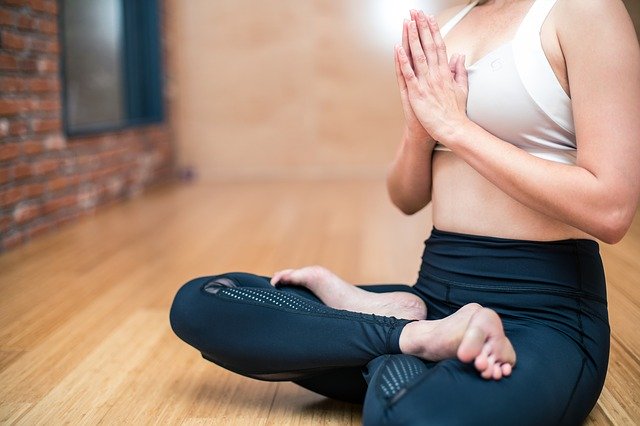Doing yoga at home can often be favorable for people who prefer to exercise and achieve mental clarity in a setting where they’re the most comfortable.
You might also be in a position where you can’t allocate the time or money to visit a studio in your area. Thankfully, you can easily hold your classes at home.
Starting Yoga at Home
Even the most advanced enthusiasts can find it challenging to know what poses to pair together for a full session. With the help of this guide, you can easily do yoga at home.
Step 1: Create Your Space
The first thing you will want to do is find a spot in your home that is free of clutter and distractions so that it can be allocated for your at-home class. Considering one of the most significant benefits of yoga is to leave feeling rejuvenated and at peace, you’ll want somewhere comfortable and serene while working out.
In your space, you might want to consider adding other zen elements, such as water features, access to natural light, and all of the yoga equipment you’ll need. The best part about yoga is that you don’t need a lot of space, as long as you have room for your mat and to elongate your body, it will be sufficient.
Step 2: Create Goals and a Plan
This point is particularly crucial for beginners because getting into yoga might seem overwhelming without a proper plan in place. You’ll first want to consider your goals. Are you searching for stress reduction, an improvement of physical capabilities, or both?
Take the time to write down your goals so that you can keep track of your progress over time. This is very important because you won’t have access to an instructor to tell you whether you are improving or not.
When it comes time to create a plan, you’ll want to work with a basic outline to ensure you’re choosing the right poses and movements. It’s also important to consider whether you’ll need unique props and pieces of equipment for the poses you’ve selected, such as blocks, a bolster, blankets, and the likes. Take the time to research an assortment of yoga sequences for your experience level and put them all together in a lesson plan that you can refer to.
Step 3: Consider Online Classes
If you’re not too keen on developing your yoga class, there is always the opportunity of finding one on your own. With the assortment of free video streaming services online, you can easily find flows from a variety of yoga masters for people of all skill levels.
There are also paid-for classes that you can sign up for to do at home. These could help to motivate you to stick to your goals as you will be paying for each class.
One of the most considerable benefits of online classes is that you can move at your own pace and truly understand your stretches and your body. There won’t be any need to worry about the skill levels of other people in the class or critiques from an instructor, as you can work at a pace that is best for your physical capabilities.
Step 4: Use a Mirror
Even though yoga is a very low-impact exercise, there is still potential for you to incur injuries, especially without the guidance of a teacher. It is far too often that beginners attempt to push themselves too far and wind up straining or overextending themselves due to poor posturing.
A fantastic recommendation is to make sure your DIY yoga studio has a mirror in a location where you can keep an eye on your movements.
By maintaining a safe and correct posture, you can genuinely lean into your stretches without pushing yourself too far. You will also be able to protect the most sensitive areas of your body, including your hips, spine, knees, and neck.
Step 5: Stick to a Schedule
Just like if you were to sign up for in-person classes, your at-home yoga practices should have a schedule that is fully adaptable to your day-to-day needs. For example, if you’re at work for eight to 10 hours a day, you won’t want to create a two-hour regime that will be too difficult to keep up with.
This tip is also essential for maintaining motivation. You’ll be less likely to achieve your goals if you can’t find enough time in the day for your workout.
At first, it’s a good idea to pencil in at least three yoga sessions per week. Then, as your skills improve, you can get up to five or seven days per week, based on your schedule. Try to aim to develop a class that lasts between 45 minutes and an hour. In doing so, you can smoothly perform your stretches first thing in the morning or right before bed.
Final Thoughts
Doing yoga at home is a phenomenal benefit for many enthusiasts, especially if you prefer to workout on your own. There are a ton of other tips that you can use to your advantage when setting up your at-home yoga classes, visit here to see more information.

